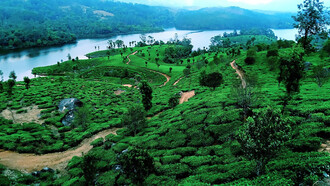Where the white sands and the coral kiss the dark blue Southern Seas; and the palm trees tall and stately wave their branches in the breeze.
(Silliman Song, Silliman University Song)
Right on the southeasternmost part of Negros Oriental in the Central Visayas region of the Philippines, the capital city of Dumaguete, coined as the “City of Gentle People,” is blessed with idyllic natural parks, stunning beaches, lakes, mountains, waterfalls, and abundant wildlife. Apo Island, Forest Camp, Mango Ranch, Casaroro Falls, Manjuyod Sandbar, Mount Talinis, and Balinsasayao Twin Lakes are just a few of the sparkling natural reserves and outdoor leisure getaways that scatter around the vicinity of Dumaguete and its neighboring towns.
Originating from the Visayan word “dagit,” or “to snatch, swoop down, and seize,” Dumaguete and its thriving townscape were formed by solidarity and vehemence borne from the harsh Moro raids in 1599 against Christian settlements in the Visayas region that “seized” local inhabitants into slavery. Before then, Spaniards had already taken control of the villages in 1571. With the establishment of Dumaguete as a “pueblo” (town) in 1620 that included a parish and mission center, churches and houses began to spring up, fostering further urban development following the Philippine-American War in 1901. After the city’s liberation from the Japanese occupation in 1945, communication, transportation, education, and social restructuring advanced forward. Historical landmarks had been planted in the region, consequently propagating an economic boom and a flourishing tourism industry as known today.
Rizal Boulevard, the coastal road that reveals majestic views of the Bohol Sea, beams with local restaurants, markets, beaches, the century-old Silliman University (founded in 1901), Quezon Park, and the popular Sans Rival Cakes and Pastries shop (sought for its cashew meringue and French buttercream concoction and smaller Silvanas cookies).
By hopping on a native “trike” or pedicab suitable for three passengers, one can adequately circle through all the notable spots of the city, including the ancestrally designed Bugles Islas Café and Café Maria restaurants, both not far from the seaside.
Buglas Islas Café has retained many of the original features of the former residence of Señor Marcelo Rotea in Bais, Negros Oriental, in the 1930s. From being a lumberyard to a garrison during the Japanese occupation, the house fell into severe decay over time until preservation of buildings in the region was carried out. Timber pieces were dismantled, transported to, and reassembled at its Dumaguete site. Indigenous Philippine architectural elements, such as “capiz” (translucent oyster shell) windows and hardwood flooring, had been meticulously restored. Traditional dishes and sweets, such as the signature “bibingka" (baked rice cake in salted egg, cheese, and freshly grated coconut), have made the restaurant a must-visit relaxation niche in Dumaguete.
Café Maria, on the other hand, is a fairly new establishment that has delicately preserved the elegant Spanish-era aesthetics. The elaborate woodwork, antique furnishings, and turn-of-the-century gardens (with a fountain) are reminiscent of ancient heritage, accompanied by Filipino-Bisaya seasonally crafted menus.
For nature trips, about less than an hour to the west of Dumaguete City, the humble town of Valencia swarms with lush greens, waterfalls, and mountains. Along the mountainside highway, the Sulfur Mountain in Valencia discharges white-hot steam from the ground and rugged mountains caused by high sulfur levels and the potentially active volcano, Mt. Talinis. The vents are a rare geological phenomenon, which also attract avid photographers ready to capture the dramatic dance of the rising fumes against the crude and barren rocks and bordering greens.
Roughly fifteen minutes from Dumaguete City, Tierra Alta Resort offers a spectacular panoramic view of the ocean and surrounding islands from 240 meters above sea level. Although Greek-Mediterranean inspired in design, the sprawling landscape overflows with verdant vegetation (mango, jackfruit, papaya, pomelo, star apple, banana, and other fruit, bamboo, and hardwood trees) that had been built on a primeval coconut and mango plantation.
Plunging in hot springs is one of the healing pleasures of passing by Valencia. Red Rock Hot Springs may feel quite compact, but the two hot spring baths inside certainly soothe one’s body pains and mental fatigue. Locals believe the natural spring water remedies ailments, such as asthma and arthritis. The name Red Rock stems from the rust-colored rocks attributed to the oxidation of iron-rich minerals. The striking color effect integrates with the rich, emerald forest. Hiking trails also lead you to the inner mountains, where the hymn of birds and soft rustle of leaves steer you closer to the exotic wildlife of Negros Oriental. Lunch is also served at small cottages perched on elevated rocks.
Not far from Red Rock Hot Springs is the enchanting Pulangbato Falls (meaning red rocks) located in Red Rock Valley. The gorgeous falls are approximately nine meters high and seem to bleed out of the mountains. They cascade down reddish-brown boulders and dive into the red-tinted river. One thrilling experience is crossing the long, swaying bamboo bridge suspended over the flowing ravine. After overcoming the jungle-like challenge, a cold “halo-halo” treat (a Filipino dessert layered with shaved ice, selected fruits, and beans in sweet condensed milk) at one of the huts surely makes for an ideal finale to the nature adventure of the day.
For accommodation, The Henry Resort Dumaguete provides the absolute sanctuary of fertile green immersed in an old-fashioned residential feel. The entire property breathes hovering flower and fruit trees and garden walkways picturesquely fronting the sea. Called the Fabian de la Rosa Lawn, this overlooking terrace spans about 420 square meters where you can lounge freely around wrought-iron table settings. There is also an open-air banquet hall with a high gabled trellis roofing covered with crawling plants. A small gallery also caters to contemporary art exhibits. Several restaurants and cafés surround the neighborhood resort, making one settle in so comfortably without ever thinking of leaving.
A few steps from the entrance stands a remarkable Bamboo Pavilion, completely designed with bamboo materials, from the roof and column supports to the side wall roofing. The structure towers at 16.5 meters, ranking it among the tallest bamboo constructions in the country. The wide and expansive space allows maximum ventilation and a sense of liberation. One can absorb an overpowering presence when gazing upwards to the spectacular umbrella of beautifully interlaced bamboo.
What more could one expect from this full-bodied medley of nature, history, tradition, gastronomy, and the endearing warmth of the people? Dumaguete will always be that one unforgettable memory to relish.
Notes
The Henry Resort Dumaguete, Dumaguete City, Philippines.
Buglas Islas Café, Dumaguete City, Philippines.
Silliman Song, Silliman University song.















